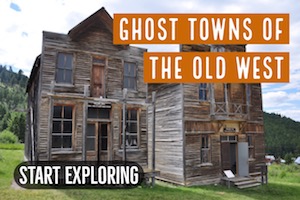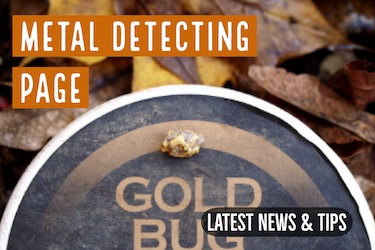There is an abundance of gold on the East Coast that you can still find by panning and sluicing.
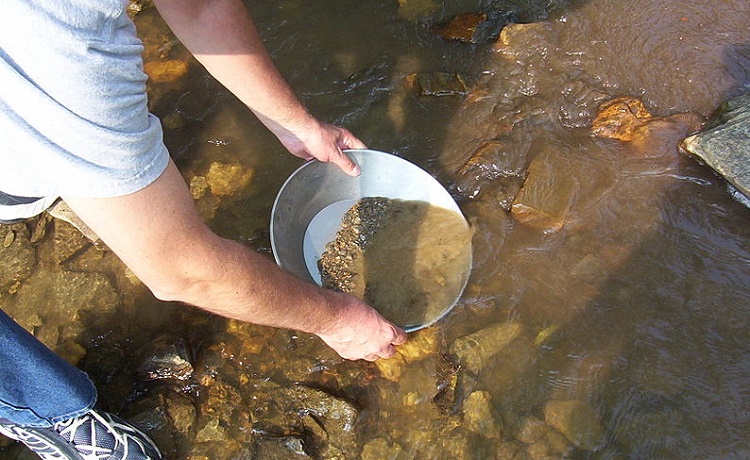
You don’t hear a whole lot about gold mining on the East Coast these days. Most of the large gold deposits in the United States were found in the West, which has overshadowed many of the gold discoveries that were made in the East.
In fact, prior to the California gold rush, there were thousands of miners in several eastern states that were making a living by mining for gold.
And there is still plenty of gold left to find today. Gold panning in the historically gold-rich areas of these 9 states can still result in some treasure at the bottom of your gold pan!
Alabama
The gold in Alabama comes from a relatively small area in the northeastern part of the state. Both placer gold and lode gold was mined primarily in Chilton County, Talapoosa County, Clay County, Cleburne County, Coosa County, and Talladega County.
Most of the gold in Alabama came from a handful of rich mines near the Georgia border.
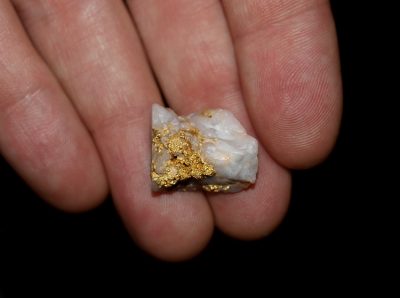
They don’t get a lot of attention these days, but Alabama and Georgia were once the top gold-producing states in the USA. Gold comes in the form of rich veins running through white quartz, but most of the gold found today is in the form of fine gold “dust.” Small-scale prospectors are still panning it from the creeks and rivers.
Georgia
Georgia is the richest of the gold-bearing states on the East Coast. Gold is abundant in Cherokee County, Lumpkin County, and White County. The town of Dahlonega was the epicenter of gold mining activity in the United States prior to the discoveries in California.
South Carolina
South Carolina is yet another state where gold can be found. The richest mines are located in the area known as the ‘Carolina Slate Belt’ that runs through several states in the Southeast. Abbeville County, Anderson County, Edgefield County, Greenville County, Lancaster County, and York County are all places where gold has been found.
More about gold in South Carolina

North Carolina
It was at the Reed Gold Mine in North Carolina where the first gold discovery was made in the East. Since that time a considerable amount of gold has been found by miners, including some very large gold nuggets. There are many, many locations in North Carolina where gold is still found in the creeks and rivers.
More about gold in North Carolina
Virginia
You can still find plenty of gold in Virginia if you know where to go. The historically rich areas include parts of Buckingham County, Carroll County, Cumberland County, Fairfax County, Fauquier County, Patrick County, and Warren County. Nearly all creek and rivers in these counties will produce gold if you pan the gravels.

Maryland
Most people wouldn’t thing that there is any gold in Maryland, but surprisingly there were several rich mines here. In fact some of the mines were just a short distance from the White House.
Tennessee
In general, Tennessee is a very poor state for gold prospecting. However there is one small location in the southeastern corner of the state that is very productive. Tellico River and Coker Creek are two places where very rich placer gold has been mined over the years. Gold panning here will still produce some nice “color.”
Maine
There are quite a few places where gold can still be found in Maine. The most famous location is the Swift River in Western Maine. This was a place that produced an abundance of large gold nuggets back when miners first discovered gold here. Big gold nuggets aren’t found very often these days, but smaller gold dust is still present in the River and surrounding tributaries.
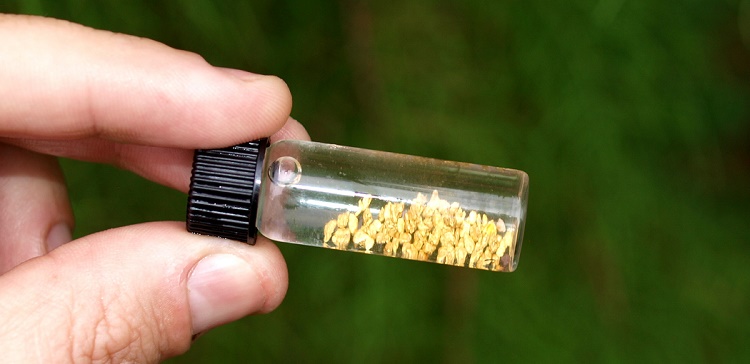
Gold Panning on the East Coast
Prospectors have been searching for gold in these East Coast states for over 200 years. And there is still plenty of gold here waiting to be found!
One challenge with prospecting for gold in the East Coast is access to gold rich areas. There is a lot of private property in these states which makes access more difficult, but with some research you are still likely to find a few places that you can access.
There are also clubs that have special opportunities to get on gold bearing grounds, so it may be worthwhile to research some local prospecting clubs.
There are also a few companies that specialize in providing gold panning opportunities. Some of them will give you “paydirt” to pan while others have access to creeks that you can do the digging yourself. These are mostly for tourists rather than serious prospectors, but it may be worth looking into.
Next: Eureka! Big Gold Nuggets found in North Carolina




